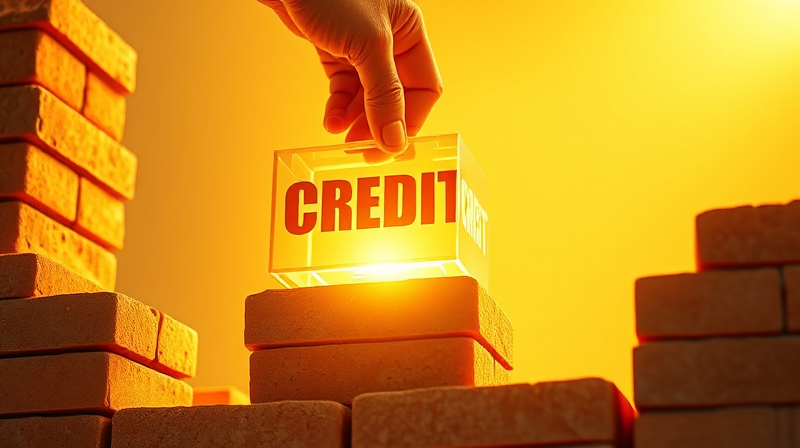
For individuals who have struggled with limited or impaired credit histories, the journey toward financial stability can seem daunting. Secured credit cards provide an accessible, structured pathway to rebuild trust with lenders and regain control over your financial narrative. By harnessing the power of disciplined spending and timely payments, you can transform a modest deposit into an opportunity to craft a positive credit legacy.
This comprehensive guide delves into the inner workings of secured credit cards, explains how they build credit, compares them to traditional unsecured cards, and equips you with inspiring, actionable steps to leverage this tool effectively.
A secured credit card functions like a traditional credit card, but requires an initial security deposit to open the account. This deposit acts as collateral, mitigating risk for the issuer while granting you access to a revolving line of credit. The amount you deposit typically determines your credit limit.
By making an upfront cash deposit equal to your desired limit, you demonstrate a commitment to responsible borrowing. Deposits can start as low as $49 and range up to $500 or more, depending on issuer policies and applicant qualifications.
Once established, the card allows you to make purchases, receive statements, and remit payments. It offers the same purchase flexibility as an unsecured credit card, including online shopping, recurring payments, and emergency expenses. The only key difference is the presence of the refundable security deposit.
Secured cards have opened doors for those previously denied credit, creating a bridge from financial uncertainty to empowerment. As you build trust with the issuer through positive account management, you set the stage for long-term financial opportunities.
Secured credit cards report your activity to major credit bureaus—Equifax, Experian, and TransUnion. Every payment, balance, and available credit figure contributes to your credit file, enabling you to influence key scoring factors.
Two of the most critical components in credit scoring are payment history and credit utilization ratio. Consistently making payments on time consistently ensures a positive payment history, while keeping balances below thirty percent minimizes risk in the eyes of lenders.
Experts recommend maintaining utilization under 30%, but aim for under 10% to maximize score improvement. Even small on-time payments can add up, signaling reliability and fiscal responsibility. Over a period as short as three to six months, you may see appreciable increases in your score.
Successful secured cardholders often receive offers to upgrade to unsecured cards within six to twelve months. When this occurs, your deposit is fully returned, and you transition seamlessly into traditional credit products, often with better rewards and higher limits.
Choosing the right credit card involves weighing both immediate accessibility and long-term benefits. Below is a comparison highlighting core differences and similarities to guide your decision-making process.
While unsecured cards may offer richer rewards programs and higher credit limits immediately, they demand a prerequisite of solid creditworthiness. Secured cards remove that barrier, trading a refundable deposit for the opportunity to prove your reliability.
This temporary trade-off can lead to permanent gains: once your credit profile strengthens, you unlock access to low-rate cards, premium benefits, and higher borrowing power.
To extract maximum benefit from your secured credit card, adopt a strategic and consistent approach. Consider the following guidelines to accelerate your credit-building journey and lay the groundwork for stronger future borrowing opportunities.
By embedding these habits into your routine, you not only improve your credit score but also cultivate disciplined financial behaviors that benefit you beyond credit building.
Awareness of common mistakes can spare you setbacks and protect your progress. Recognize and steer clear of these pitfalls to maintain upward momentum.
By staying vigilant and proactive, you can prevent small errors from derailing months of progress.
Once you’ve built a positive track record, many issuers invite you to upgrade to an unsecured card. This milestone not only returns your deposit but also unlocks enhanced features like reward points, travel perks, and higher credit limits.
Your journey doesn’t end with one upgrade. Continue practicing prudent credit management, diversify your credit mix responsibly, and aim for incremental limit increases. Over time, your credit profile will reflect a robust history of responsible borrowing, opening doors to lucrative financial products and terms.
Secured credit cards can be the foundation for your financial future. Starting with this modest, low-risk tool builds confidence, cultivates healthy money habits, and empowers you to pursue life’s milestones—whether buying a home, financing a car, or starting a business.
Secured credit cards represent a unique, empowering solution for those facing credit challenges or entering the credit world for the first time. By coupling a manageable deposit with disciplined spending, you create a win-win scenario: lenders gain security, and you gain opportunity.
Remember that credit building is a marathon, not a sprint. Every on-time payment, every low balance, and every accurate report builds toward a credit profile that lenders trust. Embrace best practices, avoid common traps, and stay engaged with your credit health.
Start today by selecting a secured card that aligns with your goals, deposit what you can afford, and commit to responsible use. With patience and persistence, you’ll transform a small deposit into a powerful tool for lifelong financial success.
References













